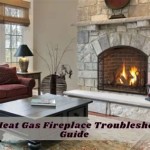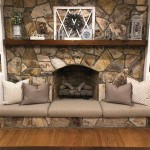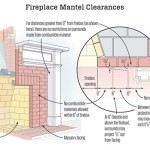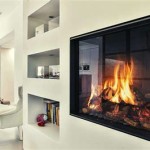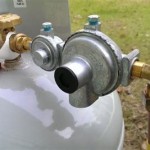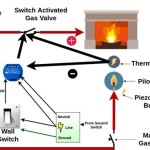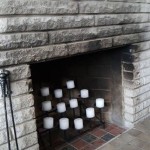Wall Fireplace Gas Small: A Comprehensive Overview
Wall-mounted gas fireplaces, particularly those classified as "small," have gained significant popularity as a supplementary heating solution and a decorative addition to modern homes. Their space-saving design, ease of installation, and clean-burning operation make them an attractive alternative to traditional wood-burning fireplaces and larger gas fireplace units. This article explores the various aspects of small wall-mounted gas fireplaces, including their benefits, types, installation considerations, safety features, maintenance requirements, and relevant regulations.
These fireplaces are engineered to be directly affixed to a wall, freeing up valuable floor space. This characteristic is particularly pertinent in smaller living spaces such as apartments, condominiums, and smaller single-family homes where maximizing available square footage is a primary concern. Furthermore, their aesthetic appeal can significantly enhance the ambiance of a room, offering the visual warmth and comfort of a fire without the associated mess and labor inherent in wood-burning options.
The operation of a small wall-mounted gas fireplace centers on the combustion of natural gas or propane. These fuels are typically piped directly into the fireplace unit, allowing for continuous and consistent operation. Ignition systems vary, ranging from manual pilot lights to more sophisticated electronic ignition systems that offer convenience and energy efficiency. The resulting flames are often visually enhanced with artificial logs, glass beads, or other decorative media designed to mimic the appearance of a traditional wood fire. Heat output is generally adjustable, providing users with control over the level of warmth produced by the unit.
Space Efficiency and Aesthetic Versatility
The primary advantage of a small wall-mounted gas fireplace lies in its space-saving design. Traditional fireplaces, even smaller freestanding gas units, require a certain amount of floor space to accommodate the firebox, venting, and associated safety clearances. A wall-mounted unit eliminates this requirement, allowing for installation in areas where a conventional fireplace would be impractical. This is especially beneficial in apartments, condominiums, and smaller homes where every square foot counts.
Beyond space efficiency, these fireplaces offer significant aesthetic versatility. They are available in a wide range of styles, from sleek and contemporary designs to more traditional and rustic looks. This allows homeowners to select a unit that perfectly complements their existing décor and personal preferences. Furthermore, the ability to mount the fireplace at various heights on the wall provides additional customization options, enabling users to create a focal point that is both visually appealing and functional.
The visual appeal is further enhanced by the variety of decorative media available. Artificial logs, made from ceramic or refractory materials, are designed to closely resemble real wood, complete with realistic textures and glowing embers. Glass beads, available in a multitude of colors and finishes, offer a more modern and minimalist aesthetic. Other options include river stones, lava rocks, and various geometric shapes, providing endless possibilities for customization and personalization.
The flame presentation itself is another key factor in the aesthetic appeal of a wall-mounted gas fireplace. Manufacturers employ various techniques to create realistic and visually engaging flames. Some units utilize multiple burners to produce a taller and more voluminous flame, while others incorporate features such as flame height adjustment and variable flame patterns to simulate the flickering and dancing of a natural wood fire. The integration of LED lighting can further enhance the visual effect, creating a warm and inviting ambiance.
Installation Considerations and Venting Options
The installation of a small wall-mounted gas fireplace requires careful planning and adherence to local building codes and manufacturer's instructions. A qualified professional, such as a licensed gas fitter or HVAC technician, should perform the installation to ensure safety and compliance. This is particularly important due to the inherent risks associated with gas lines and combustion appliances.
One of the most critical aspects of installation is the venting system. Gas fireplaces require proper venting to safely exhaust combustion byproducts, such as carbon monoxide, outside the building. There are two primary venting options for wall-mounted gas fireplaces: direct vent and vent-free.
Direct Vent: Direct vent fireplaces are sealed combustion systems that draw air from outside the building and exhaust combustion gases directly to the outside through a coaxial vent pipe. This type of venting is considered the safest and most efficient option, as it prevents indoor air from being used for combustion and eliminates the risk of backdrafting. Direct vent fireplaces can be vented horizontally through an exterior wall or vertically through the roof.
Vent-Free: Vent-free fireplaces, also known as ventless fireplaces, do not require a vent. They burn fuel so efficiently that the combustion byproducts are considered to be minimal and safe for indoor use. However, vent-free fireplaces are subject to strict regulations and are not permitted in all jurisdictions. Furthermore, they can contribute to indoor air pollution and increase humidity levels, which may be a concern for individuals with respiratory problems or allergies. It's crucial to carefully consider the potential drawbacks of vent-free fireplaces and consult with local building officials before making a decision.
In addition to the venting system, other installation considerations include gas line connections, electrical wiring (for electronic ignition systems), and wall reinforcement. The wall onto which the fireplace is mounted must be structurally sound and capable of supporting the weight of the unit. In some cases, additional framing or bracing may be required to ensure a secure and stable installation.
Clearances to combustible materials, such as walls, ceilings, and furniture, must also be strictly observed. Manufacturers provide specific clearance requirements in their installation manuals, and it is essential to adhere to these guidelines to prevent fire hazards. Failure to maintain proper clearances can result in overheating, damage to surrounding materials, and potentially dangerous situations.
Safety Features and Maintenance Requirements
Safety is paramount when it comes to gas appliances, and small wall-mounted gas fireplaces are equipped with a variety of safety features designed to prevent accidents and ensure safe operation. These features typically include:
Oxygen Depletion Sensor (ODS): The ODS is a safety device that monitors the oxygen level in the room. If the oxygen level drops below a certain threshold, the ODS automatically shuts off the gas supply to the fireplace, preventing carbon monoxide poisoning. This is a standard safety feature on most gas fireplaces, particularly vent-free models.
Flame Failure Device: The flame failure device (FFD) is another critical safety feature that shuts off the gas supply if the flame is extinguished. This prevents unburned gas from accumulating in the room, which could create a fire or explosion hazard.
Pressure Regulator: The pressure regulator ensures that the gas pressure supplied to the fireplace remains within a safe and consistent range. Fluctuations in gas pressure can affect the flame quality and heat output of the fireplace, and can also pose a safety risk.
Overheat Protection: Some fireplaces are equipped with an overheat protection system that shuts off the unit if it becomes excessively hot. This prevents damage to the fireplace itself and reduces the risk of fire.
Regular maintenance is essential to ensure the safe and efficient operation of a small wall-mounted gas fireplace. Maintenance tasks typically include:
Cleaning: Regularly clean the fireplace glass and burner assembly to remove dust, dirt, and debris. This will help to maintain a clear view of the flames and ensure proper combustion.
Inspection: Inspect the gas line connections, vent pipe, and other components for any signs of damage or deterioration. Replace any worn or damaged parts immediately.
Professional Servicing: Schedule annual servicing by a qualified gas fitter or HVAC technician. This professional inspection will ensure that all components are functioning properly and that the fireplace is operating safely.
It is also important to be aware of the symptoms of carbon monoxide poisoning, which include headache, dizziness, nausea, and shortness of breath. If you suspect carbon monoxide poisoning, evacuate the building immediately and call emergency services.
In conclusion, small wall-mounted gas fireplaces offer a compelling combination of space efficiency, aesthetic versatility, and ease of use. However, proper installation, adherence to safety regulations, and regular maintenance are crucial to ensure safe and reliable operation. By carefully considering these factors, homeowners can enjoy the warmth and ambiance of a fireplace without compromising on safety or space.

Small Fireplace Xtrordinair

Ledge Wall Mount Gas Fireplace

Napoleon Vittoria Direct Vent Gas Fireplace Hearth Stove Patio

Contemporary Wall Mounted Gas Stove Hi Fire Ligero Thermocet Bv Small Fireplace Tv

Napoleon Park Avenue Direct Vent Gas Fireplace Hearth Stove Patio

Fireplaces Ideas Designs Photos Trendir Small Gas Fireplace Corner Home

Lopi Radiant Plus Small Gas Fireplace Insert

Small Fireplaces Friendly Fires

Contemporary Gas Fireplaces SÓlas Fires

Empire 29 Loft Small Vent Free Gas Fireplace Insert Vflc20in Us
Related Posts


